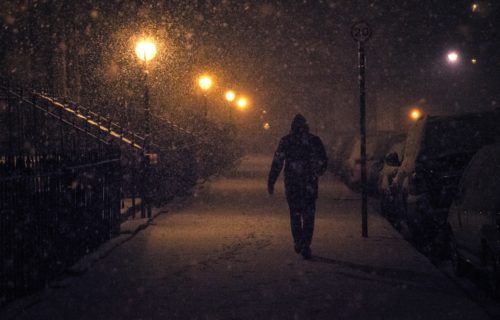SHANGHAI, China — Can a stroll through a well-lit neighborhood at night lead to diabetes? New research says yes, it’s possible.
Researchers in China report that artificial outdoor lights at night alter the human body clock, impairing blood sugar control. Streetlights, cars, and well-lit storefronts could have a harmful effect on metabolic health. The team notes that the findings have implications for late-night shift workers.
The discovery also has implications for people who like to use smartphones or tablets in bed. The findings come from a review of almost 100,000 men and women in China. Those exposed to the most light were 28 percent more likely to develop diabetes.
“Despite over 80% of the world’s population being exposed to light pollution at night, this problem has gained limited attention from scientists until recent years,” researchers say in a media release.
The study in Diabetologia estimates that more than nine million cases among Chinese adults are attributable to nighttime light exposure.
Evidence is growing that 24-7 lifestyles are wreaking havoc with our health by interfering with the production of melatonin. The naturally occurring brain hormone helps regulate circadian rhythms and the body’s protection against illness. Chronic exposure to residential outdoor artificial light displayed a link to a rise in glucose levels, insulin resistance, and diabetes prevalence. It also had a connection to poorer function of beta cells, which control blood sugar by releasing insulin — a hormone stored in the pancreas.
Light pollution is everywhere in the U.S.
The study used data from the China Noncommunicable Disease Surveillance Study, a representative sample of the general population across 162 sites across the country. A total of 98,658 participants underwent interviews to collect demographic, medical, household income, lifestyle, education, and family history information.
The team measured body weight and height to calculate BMI and collected blood samples to obtain levels of both fasting and after-meal glucose, as well as glycated hemoglobin (HbA1c). This is a form of glucose bound in red blood cells which acts as a moving average of blood sugar over the previous eight to 12 weeks.
Researchers assigned participants an average artificial outdoor light exposure level for that location using satellite images. They were divided into five groups, from highest to lowest. On average, for every 42 people living in regions with the most light exposure, there was one more case of diabetes.
Study authors say that the pervasiveness of outdoor lighting means the scale of exposure to the population is vast. Its global nature is illustrated by the fact more than 99 percent of those in the U.S. and Europe live under light-polluted skies.
Researchers add that the exposure to artificial light at night is an unstoppable environmental risk factor in modern societies. Not only are residents in big cities affected, but also those in distant areas such as the suburbs and parks hundreds of miles from light sources.
How does light exposure change the body?
Earth’s 24-hour day-night cycle has resulted in most organisms, including humans, having a built-in circadian timing system. It adapts to the natural sequence of light and dark periods. Light pollution has been found to alter the circadian rhythm of insects, birds, and other animals, resulting in premature death and loss of biodiversity.
The authors conclude that “further studies involving the direct measurement of individual exposure to LAN are needed to confirm whether its relationship with diabetes is a causal one.”
Studies mark it as a potential cause of metabolic dysregulation, by altering the timing of food intake. Rats exposed to artificial light developed glucose intolerance, exhibiting elevated blood sugar and insulin. Another study found mice exposed to nocturnal dim white light of minimal brightness for four weeks had increased body mass and reduced glucose tolerance.
This was compared to animals whose environment was completely dark at night, despite having roughly equivalent energy consumption and expenditure. Associations have also been found between light pollution and health problems in humans.
A study of night-shift workers found those exposed to brighter light were more likely to have disrupted circadian rhythms, as well as a greater risk of coronary heart disease. Other studies have found that higher light exposure is associated with a 13 and 22-percent increase in the likelihood of being overweight and obese, respectively.
Exposure to light in the bedroom – such as from the blue light of smartphones and tablets – also displays a connection to the development of diabetes among elderly people.
“The positive associations indicate an urgent need for countries and governments to develop effective prevention and intervention policies and to protect people from the adverse health effects of light pollution at night,” researchers conclude.
Type 2 diabetes, the form linked to unhealthy lifestyles, affects over 30 million Americans.
South West News Service writer Mark Waghorn contributed to this report.

